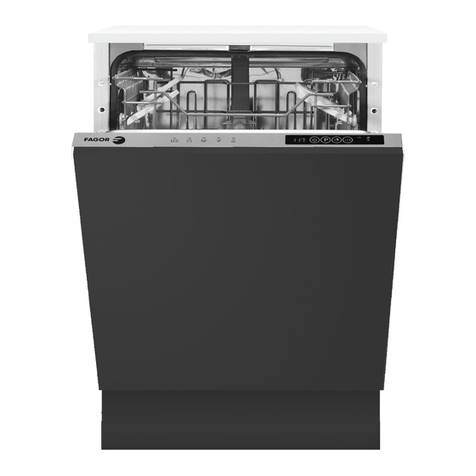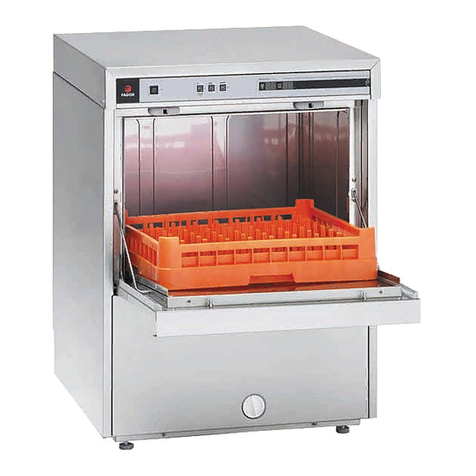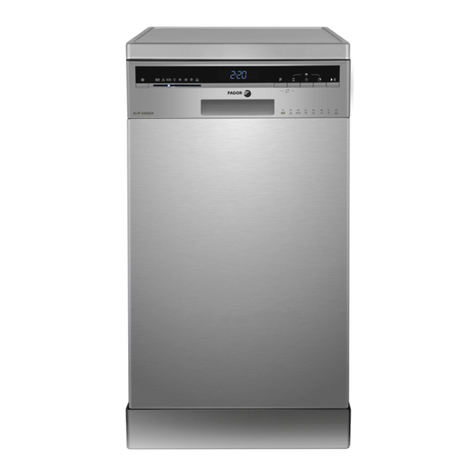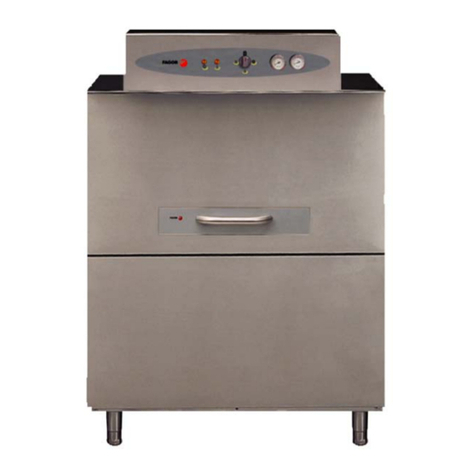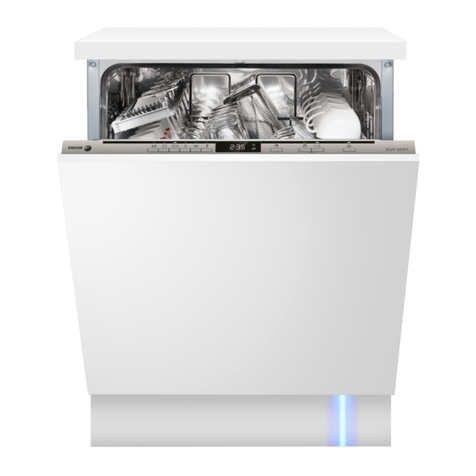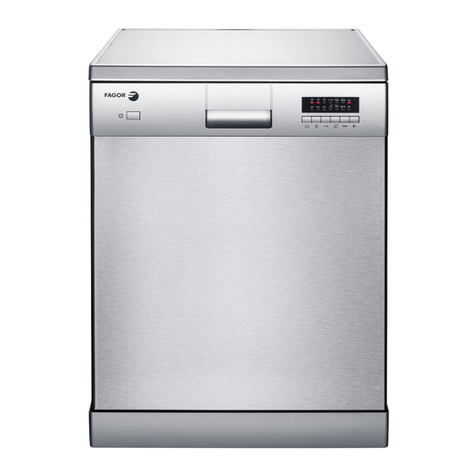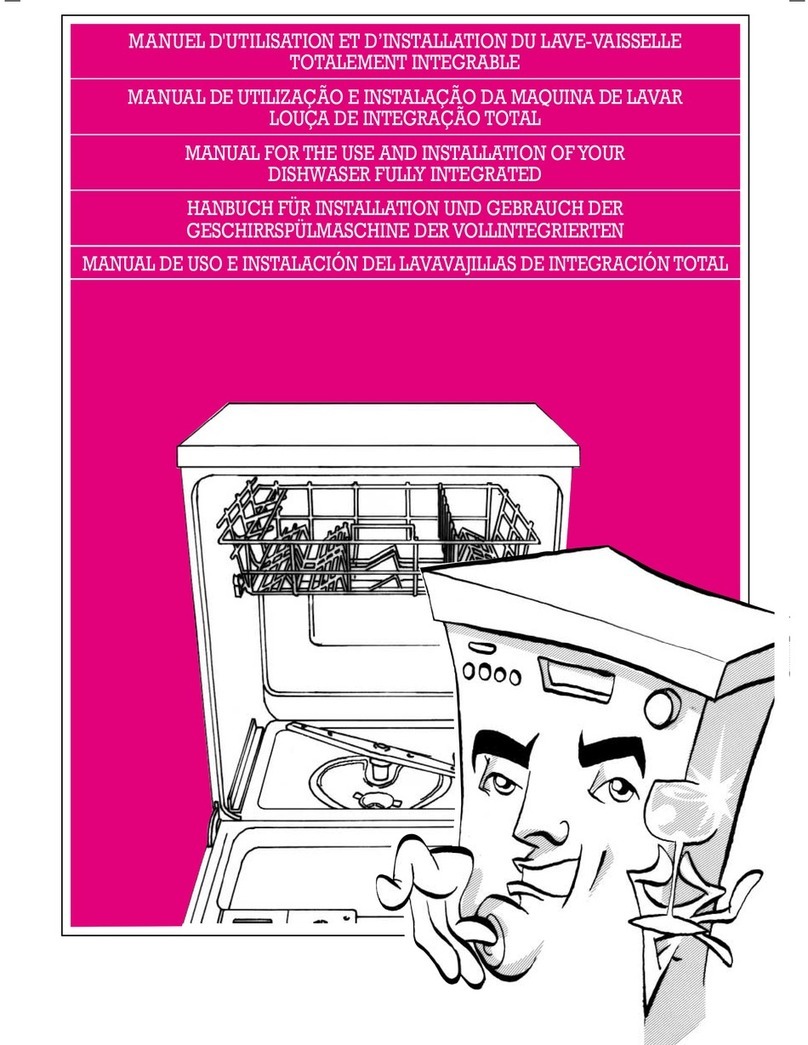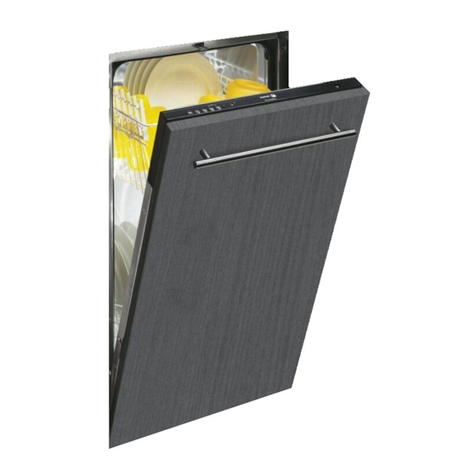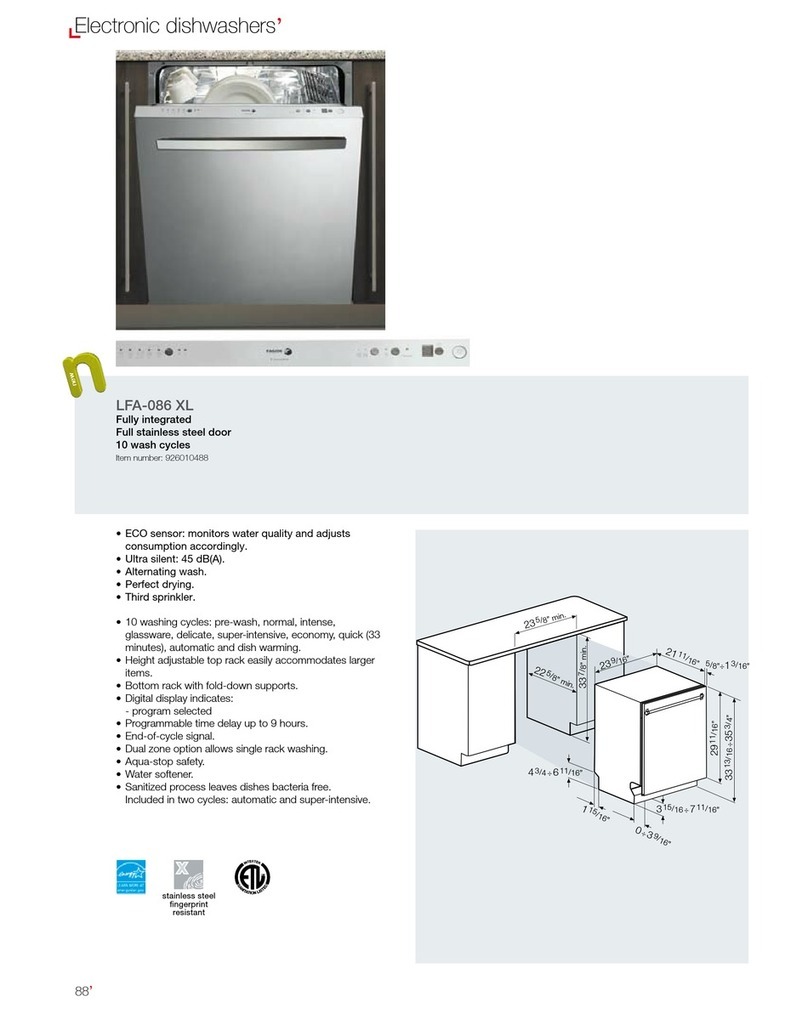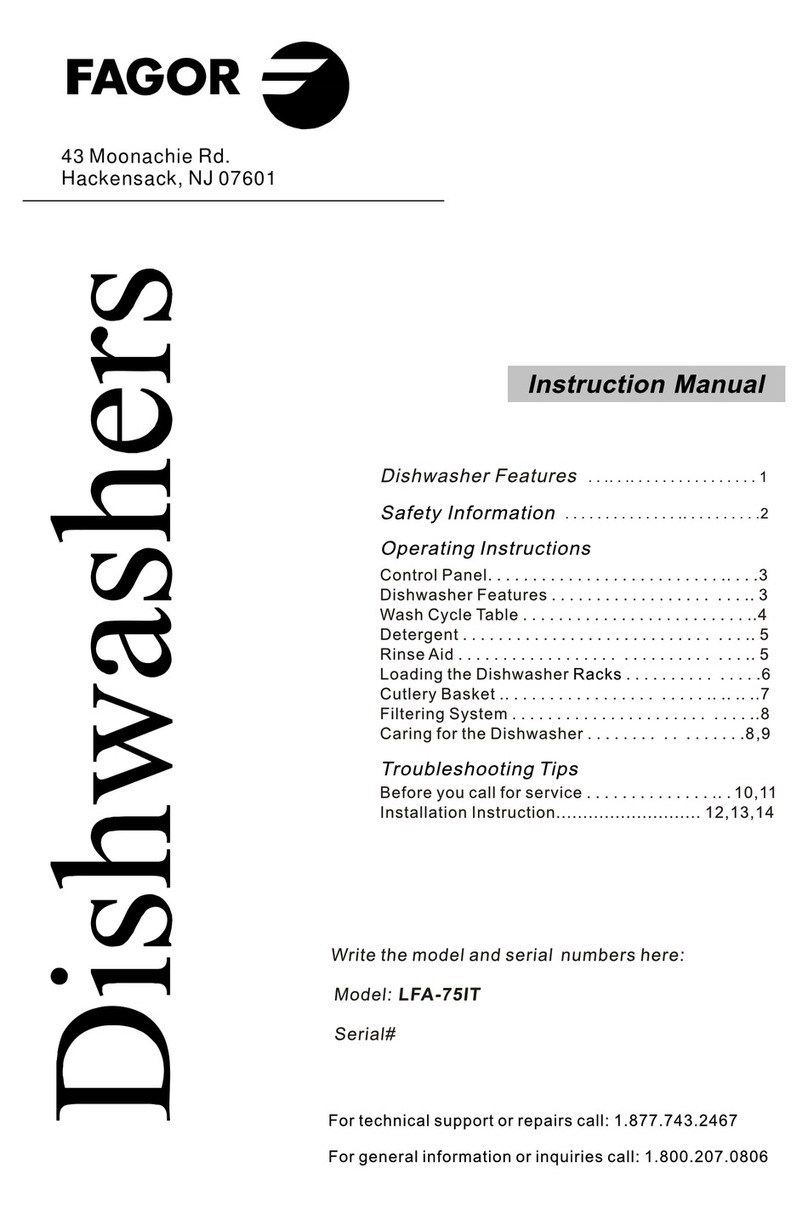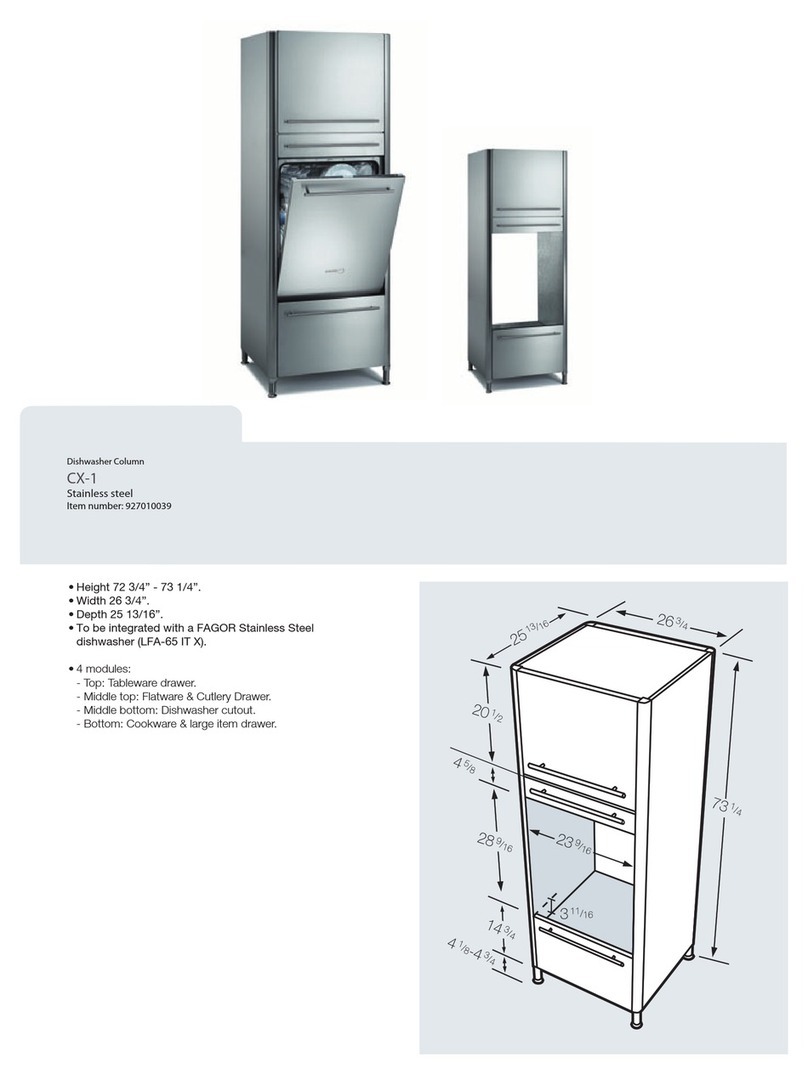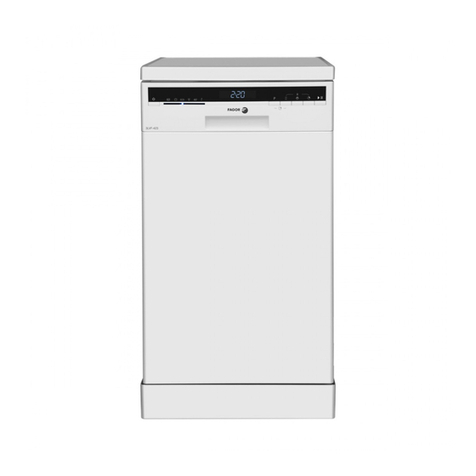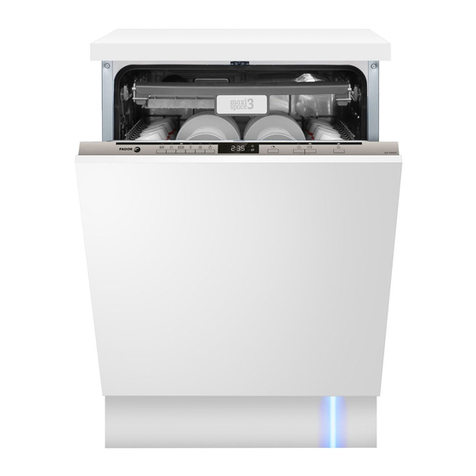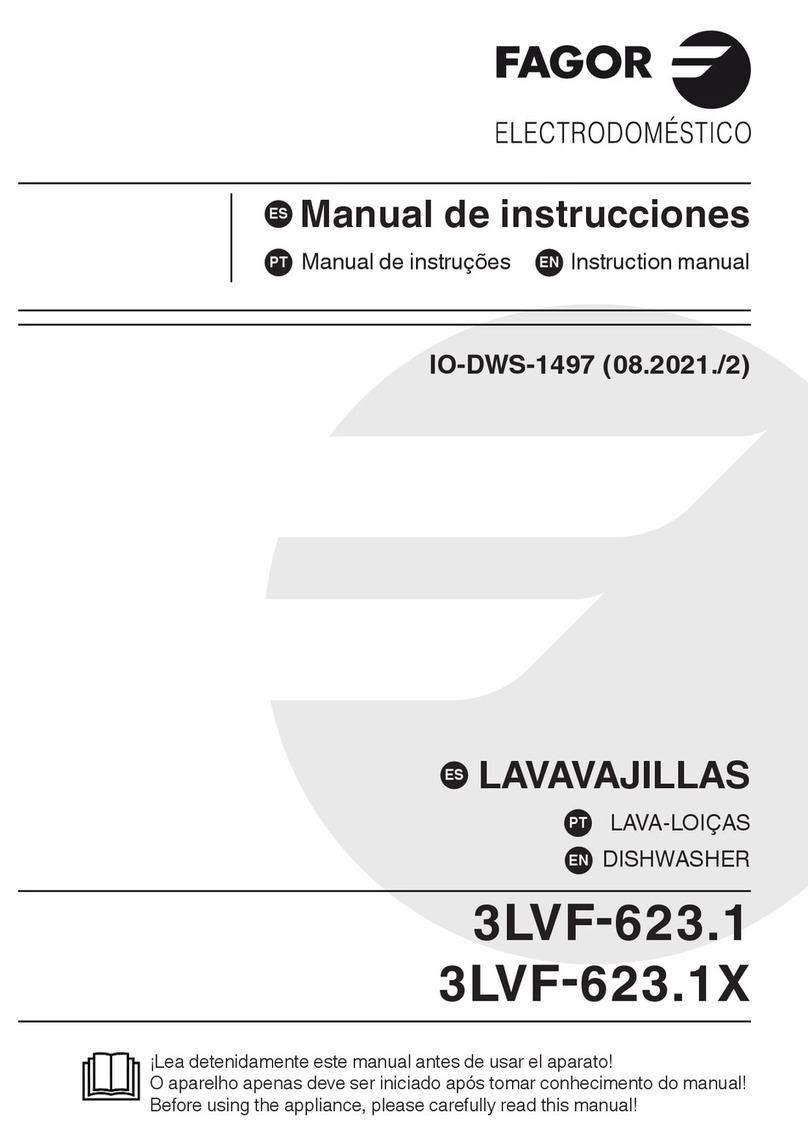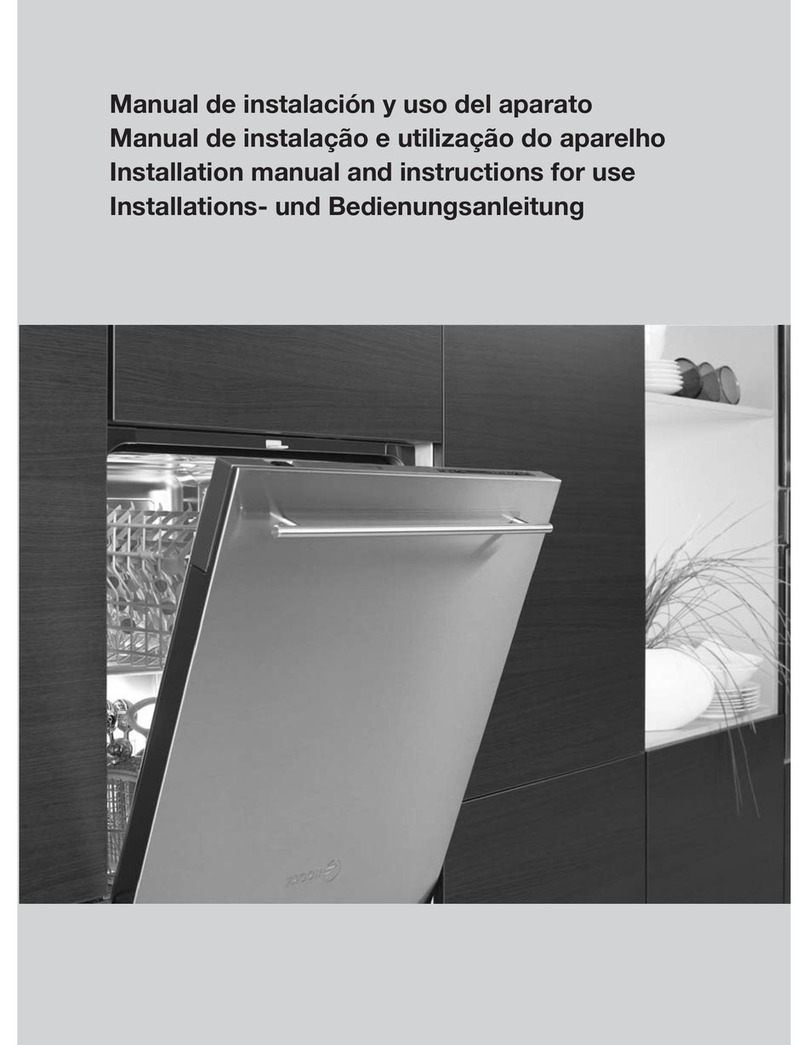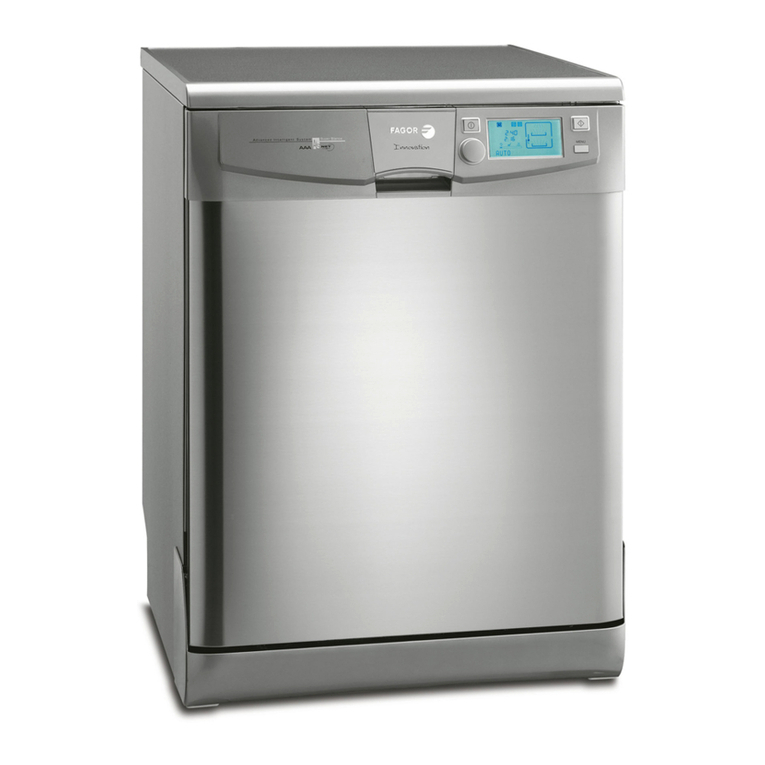3
TABLE - INDICE - CONTENTS - INHALTSVERZEICHNIS - INDICE - INHOUD- PERIECOMENA-INDICE
FRANÇAIS
Description du manuel ......................................... 4
Déballaje ................................................................ 4
Lave-vaisselle indépendants ............................... 4
Lave-vaisselle habillables .................................... 4
Opérations pour l'habillage de la porte ............. 5
Lave-vaisselle encastrables ................................. 5
Habillage et ajustage de la porte ........................ 5
Lave-vaisselle intégrables ................................... 6
Opérations pour l'intégration du
lave-vaisselle ......................................................... 6
Raccordement au réseau d'eau ........................... 7
Raccordement de la vidange ............................... 7
Raccordement électrique ..................................... 8
PORTUGUÊS
Conselhos prévios ................................................ 9
Desenvalagem ....................................................... 9
Maquina de lavar louça independentes ............. 9
Maquinas de lavar louça painelaveis..................9
Decoração da porta ........................................... 10
Maquinas de lavar louça embutidas ................ 10
Colocação de painéis e regulação
da porta ............................................................... 10
Maquinas de lavar louça integráveis ............... 11
Operações para a integração da Maquina de
lavar louça ........................................................... 11
Ligação a rede de agua ..................................... 12
Conexão do esgoto ............................................ 13
Ligação eléctrica ................................................ 13
ENGLISH
Important information ........................................ 14
Unpacking ........................................................... 14
Free-standing dishwashers ............................... 14
Panellable dishwashers ..................................... 14
Fitting the panels ................................................ 15
Built-in dishwashers ........................................... 15
Panelling and adjusting the door ...................... 15
Integrated dishwashers ..................................... 16
Water supply connection .................................. 17
Drainage connection .......................................... 17
Electrical connections ........................................ 18
DEUTSCH
Einleitende Bemerkungen ................................ 19
Auspacken.......................................................... 19
Freistehender Geschirrspüler ......................... 19
Einpaßbarer Geschirrspüler ........................... 20
Arbeitsschritte zur Verkleidung der Tür ........ 20
Einklinkbarer Geschirrspüler .......................... 20
Arbeitsschritte zur Verkleidung der Tür ........ 21
Einsetzbarer Geschirrspüler ........................... 21
Auszuführende Arbeitsschritte zu
Einsetzen des Geschirrispülers ...................... 22
Wasseranschluß ................................................ 23
Wasserabfluß ..................................................... 23
Elektrische Anschlüsse ..................................... 24
ITALIANO
Avvertenze preliminari ......................................... 25
Disimballaggio ....................................................... 25
Lavastoviglie indipendenti ................................... 25
Lavastoviglie pannellabili ..................................... 25
Come pannellare la porta .................................... 26
Lavastoviglie a incasso ......................................... 26
Rivestimento della porta ....................................... 26
Lavastoviglie integrabili ....................................... 27
Come integrare la lavastoviglie .......................... 27
Allacciamento alla rete idrica .............................. 28
Allacciamento alla rete fognaria .......................... 28
Collegamenti elettrici ........................................... 29
NEDERLANDS:
Advies vooraf .................................................................. 30
Uitpakken ........................................................................ 30
Vrijstaande vaatwasmachines ...................................... 30
Tussenbouw vaatwasmachines .................................... 30
Decorpaneel van de deur ............................................. 31
Onderbouw vaatwasmaschines ................................... 31
Paneelbevestiging en afstelling van de deur .............. 31
Geintegreerde vaatwasmachines ................................ 32
Aanwijzingen voor het inbouwen van de
vaatwasmaschines ......................................................... 32
Wateraansluiting ............................................................. 33
Waterafvoer .................................................................... 34
Elektrische aansluitingen .............................................. 34
PERIECOMENA
Prokatarktik™j sust£seij ......................................... 35
ApÒsursh tou peritul… matoj ................................... 35
Plunt»ria pi£twn anex£rthta .................................. 35
Plunt»ria pi£twn ependuÒmena ............................... 35
En™r eiej ia thn ep™ndush thj pÒrtaj ............... 36
Plunt»ria pi£twn entoicizÒmena ............................ 36
Ep™ndush kai rÚqmish thj pÒrtaj ........................... 36
Plunt»ria pi£twn enswmatwnÒmena ...................... 37
En™r eiej ia thn enswm£twsh tou plunthr…ou37
SÚndesh sto d…ktuo neroÚ ............................................ 38
SÚndesh exa w »j neroÚ .............................................. 39
Hlektrik™j sund™seij ..................................................... 39
ESPAÑOL
Advertencias previas ............................................ 40
Desembalaje .......................................................... 40
Lavavajillas independientes ................................. 40
Lavavajillas panelables ......................................... 40
Operaciones para la panelación de la puerta .. 41
Lavavajillas encastrables ...................................... 41
Panelación y regulación de la puerta ................. 41
Lavavajillas integrables ........................................ 42
Operaciones para la integración del
lavavajillas .............................................................. 42
Conexión a la red de agua ................................... 43
Conexión de desagüe .......................................... 44
Conexiones eléctricas .......................................... 44
